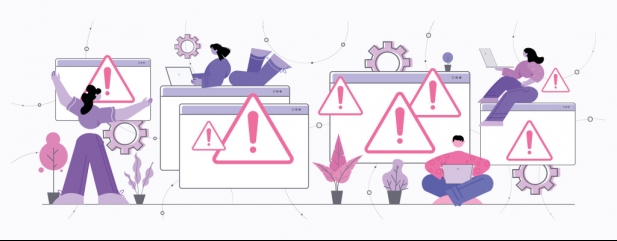Archived article
Please note that tax, investment, pension and ISA rules can change and the information and any views contained in this article may now be inaccurate.
Automatic enrolment: the key facts

At the start of the century, the government of the time asked Dr Adair Turner to investigate poor pension saving rates.
Turner’s Pension Commission suggested adopting automatic enrolment into a pension scheme. Since 2012, a new employee will automatically join the employer’s pension scheme, and both the employee and the employer pay a minimum amount into the retirement pot.
The individual doesn’t have to make an active choice or request membership or sign application forms. It all happens automatically. If the individual decides they don’t want to join, then they can opt out and their membership is cancelled as if it never existed.
DOES EVERYONE GET AUTOMATICALLY ENROLLED INTO A PENSION?
Not quite – there are some parameters. Only the employed are automatically enrolled, and not the self-employed. You have to be 22 or over and under state pension age, which, at the moment, is 66 for both men and women.
You also have to be earning at least £10,000 a year – that figure isn’t just basic salary, it includes any overtime and bonuses. But even if you don’t fit into these parameters, you can still ask to join the pension scheme; your employer cannot refuse if you do. And if you earn over £6,240 a year your employer has to pay into the pension scheme.
CAN I DECIDE WHICH PROVIDER TO SAVE WITH?
No. Your employer will have chosen a provider to run their pension scheme. However, you could choose to save extra in a different pension scheme at the same time you save in your employer’s pension scheme.
WHAT ARE AUTOMATIC ENROLMENT MINIMUM CONTRIBUTIONS AND CAN I PAY MORE?
If you remain automatically enrolled, then you probably have to pay into your pension scheme. The standard minimum contribution you will have to pay is 4% of a band of earnings – called qualifying earnings, between £6,240 and £50,270 (in 2021/22).
Your employer will pay 3% of this band of earnings, and the government will add another 1% as tax relief, making a total of 8%. This effectively doubles your contribution.
However, your employer might choose to pay in more than this amount and/or might pay a contribution based on your whole salary rather than just a band. It will depend upon their pension rules.
WHERE WILL MY PENSION BE INVESTED?
The whole idea behind automatic enrolment is the employee joins the pension scheme without having to make any decisions. Therefore, when you are automatically enrolled in your pension scheme, contributions will be invested in a default investment fund which will be managed for you right up to when you take the benefits.
Default funds come under a high level of scrutiny. The employer and scheme trustees have a duty to ensure their default fund remains appropriate for their employees.
But you don’t have to stay invested in the default fund. The downside of a default fund is that it is designed for a wide range of people, so it won’t be tailored for your individual needs.
You might have different views on where you want your money invested and the level of risk you are prepared to take. You may also want to choose funds specifically to match your outlook on environmental or social concerns.
Instead, you can choose different investments for your contributions, and/or the money you have already built up in your pension. The different investment funds on offer will depend upon the scheme your employer has chosen.
WHAT HAPPENS IF I WANT TO OPT OUT?
Your employer cannot ask you or force you to opt out of your pension scheme. But once you have been automatically enrolled, you can always choose to opt out.
To do this you need to ask the pension provider for an opt out form, complete it, and then return it to your employer (or your pension provider might allow you to opt out online).
If you opt out of the scheme within one month of being automatically enrolled, you’ll be treated as if you had never joined the scheme, and any money that you’ve paid in will be refunded in full.
But you will only get back the money you paid in – not the tax relief awarded by the government or your employer’s contributions.
If you decide to stop saving after the first month has passed any contributions you and your employer have made will usually be held within the pension scheme, together with the tax relief given to you by the government. You will then be able to access this money from the age of 55 (rising to 57 from 2028). At that point you can withdraw it either in full or in part, or use it to buy an annuity, or just leave it to continue to grow and access the funds later.
If you do decide to opt out, then after three years the employer has to automatically enrol you back into the pension scheme (if you still qualify). If you still don’t want to pay contributions you can then opt out again, and the process will continue when the employer re-enrols you after another three years.
Remember though if you do opt out you lose the value of your employer contributions – they cannot give you the value of the lost pension contributions in any other way, such as a higher salary.
So, if you change your mind you can ask to re-join the scheme at any time. However, your employer only has to respond to all requests to re-join a scheme once every 12 months, so it may be some time before your request is actioned.
WHAT ABOUT THE SELF-EMPLOYED?
If you are self-employed then you won’t have an employer and automatic enrolment does not affect you.
However, you may still want to think about how you can save tax-efficiently for your later life, either through a pension or a Lifetime ISA (if you are young enough to qualify for an account) or both. Both tax wrappers offer generous tax advantages. Read more here.
WHAT ABOUT DIRECTORS – ARE THERE ANY EXEMPTIONS?
In some cases, directors may be exempt from automatic enrolment.
A lot hinges on whether the director has a contract of employment with the organisation. The contract of employment does not have to be written down anywhere – it could be verbal or implied.
If a director does not have an employment contract, they are exempt from automatic enrolment. However, if the organisation has other staff, then it is counted as an employer and has to think about automatic enrolment for those other staff.
If a director does have an employment contract, they do not have to be automatically enrolled if they are the only person in the company with an employment contract. But if there are other people working in the company with an employment contract then both the director and the staff have to be considered for automatic enrolment. This is a complicated area and if it applies to you then the Pensions Regulator has helpful information.
I EMPLOY ONE PERSON – WHAT DO I HAVE TO DO?
If you employ anyone, even if it’s just one person like a nanny or a gardener, then you need to think about whether automatic enrolment applies to you as an employer. The Pensions Regulator can give you lots of useful information about what you need to do.
DOES IT EVER MAKE SENSE TO OPT OUT OF AUTO-ENROLMENT?
For most people it makes sense to stay within the pension scheme once they have been automatically enrolled. This way they can benefit not only from tax relief and tax-free growth from the government, but they can also benefit from their employer’s pension contribution, which they will lose if they opt out.
As the employer contribution makes up over 37% of the money being paid into the pension, the loss of these contributions is significant.
However, there are situations where it may make sense to opt out. For example, if you really cannot afford to pay your contributions.
If an individual has claimed Fixed Protection or Enhanced Protection to protect their lifetime allowance, then this protection may be broken if they pay into a pension scheme. If their employer has reasonable grounds to believe that the individual might have one of these protections then they do not have to automatically enrol them into the pension scheme.
However, the employer is not required to exempt the individual. So, any individual holding such protection should be aware that if they are automatically enrolled, they should opt out to retain their lifetime allowance protection.
Important information:
These articles are provided by Shares magazine which is published by AJ Bell Media, a part of AJ Bell. Shares is not written by AJ Bell.
Shares is provided for your general information and use and is not a personal recommendation to invest. It is not intended to be relied upon by you in making or not making any investment decisions. The investments referred to in these articles will not be suitable for all investors. If in doubt please seek appropriate independent financial advice.
Investors acting on the information in these articles do so at their own risk and AJ Bell Media and its staff do not accept liability for losses suffered by investors as a result of their investment decisions.
Issue contents
Education
Feature
Great Ideas
- A costly TeamViewer error: hands up, we called this stock wrong
- ASML is still a core holding for investors despite big share price rally
- Bank of England prediction for rising insolvencies good for FRP
- Right time to own Ruffer as inflation pressures mount
- EasyJet shares are underpricing the airline’s recovery potential
- The fund that seeks to defend against inflation
Investment Trusts
Money Matters
News
- Entain’s silence on DraftKings takeover approach is puzzling
- IPOs still coming thick and fast despite some cancellations
- Knock-on effects from higher gas prices are wider than many think
- ASOS shareholders hope new CEO can revive share price growth
- Chubb’s $5.7bn Asian deal has positive read-across to Prudential

 magazine
magazine








